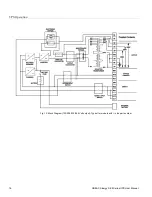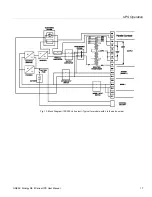
Safety
ONEAC Sinergy SE II Series UPS User Manual
3
Safety
This device serves as an uninterruptible power supply for connected loads. The UPS is in compliance with
all relevant safety regulations concerning information technology equipment, for use in an office
environment.
Depending on the type and rating of UPS, certain configurations of battery extensions may be connected.
These battery extensions may only be connected to the compatible basic UPS unit.
General Warnings
WARNING: We consider the safety of personnel to be of paramount importance. For this reason it is
essential that procedures relating to safety in this manual be carefully reviewed before commencing work,
and properly adhered to thereafter. The User or Operator may intervene in the operation of the UPS
provided that the instructions laid out in the section titled “UPS Start-Up & Shut Down” on page 23 are
strictly followed.
WARNING: The installation of the UPS, described in the section titled “Installation” on page 8, may
only be carried out by qualified technical personnel according to local and national electrical codes such
as the NEC
®
.
WARNING: Even when all switches and/or circuit breakers are open, dangerous voltages are present
within this unit! There are no user-serviceable parts inside. Only factory authorized technical personnel
may carry out any operation that requires protection panels to be opened and/or removed. Any repairs or
modifications by the user may result in out-of-warranty repair charges, unsafe electrical conditions, or
violation of electrical codes.
Safety Notices
WARNING: Read the following safety notices carefully! Disregarding these safety notes may endanger
your life, your health, and the reliability of your UPS and the security of your data.
• Transport the unit only in suitable packaging (protected against jolts and shocks).
• If the equipment is moved from a cold environment to a warmer operating location, condensation
may occur. Before you switch on the equipment it must be absolutely dry. An acclimatization period
of at least two hours is required.
• The equipment must be installed in accordance with the environmental conditions specified in
“Environmental Conditions” on page 7 and Table 2, “Installation Data,” on page 8.
• Even with all buttons and circuit breakers in the “OFF” position the UPS is not isolated from the
mains. To isolate completely from the mains, the power cables must be disconnected.
• This UPS device receives power from more than one source. The output terminals and/or
receptacles may have voltage present even when the input is disconnected. UPSs present a different
safety issue than most electrical equipment because unplugging the UPS may cause the UPS to
operate in battery or backup mode. Disconnecting the UPS input does not remove the electrical
charge.
• In case of interruption of the mains voltage, the integrated battery maintains the power supply to the
user’s equipment.
• Lay all cables so that nobody can stand on them or trip over them. Only connect input and output
cables (or battery cables when external battery cabinets are used) by following the installation
guidelines provided in this user manual and by referring to applicable codes.
• Make sure that no metal objects (e.g. pins, necklaces, paper clips, etc.) are introduced or left inside
the UPS.
• In emergencies (e.g. damaged case, controls or power cables, penetration of liquids or foreign
matter) switch off the UPS and contact Technical Support for assistance.
• Do not connect equipment that will overload the UPS or equipment that is designed to draw
DC-current.
• When cleaning the unit, follow the instructions in the section titled “Maintenance” on page 26.
• The sum of the leakage currents (protective conductor current) of the UPS and the connected UPSs
exceeds 3.5 mA for all ratings of the UPS. Ground (earth) connection is essential before connecting
supply.
• Data transmission lines should not be connected or disconnected during a thunderstorm.
• The Remote Power Off (RPO/ESD) contacts are located on the rear of the unit (Figure 9). When this
Intended Use





































